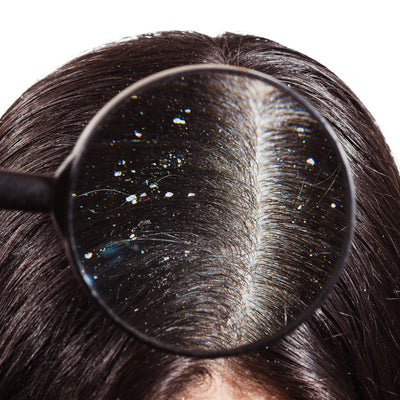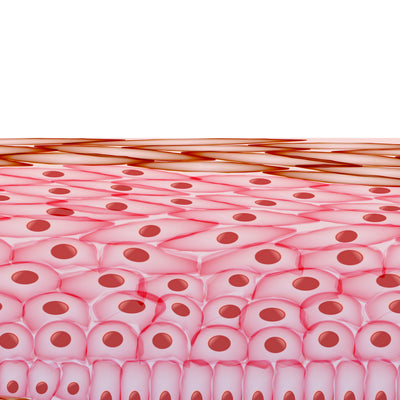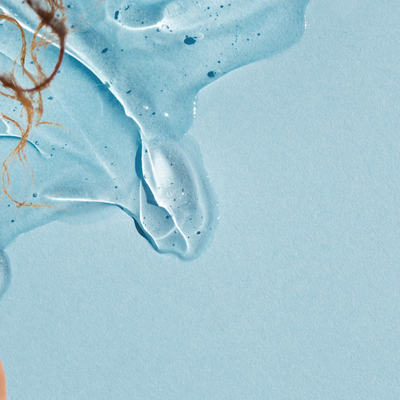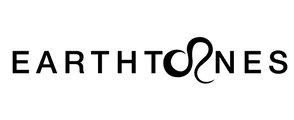
Hair Typing Systems
Hair Typing Systems
Susan Walker| February 12, 2015

Okay this is the final installment of the hair typing posts. We’re finally going to take a look at the various systems and how to use them OBJECTIVELY to determine just what your hair needs.
Now that hair texture and type are established, we can take a closer look at some popular hair typing systems. These are used by textured women to help identify their hair and communicate with other curlies or product choice and hair care methods. Some of these systems are simple, some more complex. In my opinion, I believe they should be used as a general guide to better understand your hair, which products will be beneficial for it, and how to take care of it.
Hair Typing Systems
Andre Walker’s Curl Typing System
Possibly the most popular and used by mainly curly girls is the Andre Walker system. Many systems are based on this one. In 1997 he took the standard hairdresser texture classes and expanded it into curl typing. He classified hair into four main categories: Straight – Type 1, Wavy – Type 2, Curly – Type 3 and Kinky – Type 4. Andre created and defined subcategories – a, b, c – within the texture classes.
Type 1
Type 1 is straight hair and is further subcategorized:
•Type 1a – Straight (Fine/Thin) – Hair tends to be very soft, shiny and difficult to hold a curl. Hair also tends to be oily, and difficult to damage.
•Type 1b – Straight (Medium) – Hair has lots of volume & body.
•Type 1c – Straight (Coarse) – Hair is normally bone straight and difficult to curl. Asian women usually fall into this category.
Type 2
Type 2 is wavy and tends to be coarse, with a definite S pattern to it. There are three Type 2 subtypes defined below.
•Type 2a – Wavy (Fine/Thin) – Hair has a definite “S” pattern. Normally can accomplish various styles.
•Type 2b – Wavy (Medium) – Hair tends to be frizzy, and a little resistant to styling.
•Type 2c – Wavy (Coarse) – Hair is also resistant to styling and normally very frizzy; tends to have thicker waves.
Type 3
When this type of hair is wet, it appears to be pretty straight. As it dries, the hair goes back to its curly state. When curly hair is wet it usually straightens out. As it dries, it absorbs the water and contracts to its curliest state. Humidity tends to make this type of curly hair even curlier, or frizzier. Type 3 hair has a lot of body and is easily styled in its natural state, or it can be easily straightened with a blow-dryer into a smoother style. Healthy Type 3 hair is shiny, with soft, smooth curls and strong elasticity. The curls are well defined and springy.
Andre defines two subtypes of curly hair. First, there is type 3a and 3b. The longer the hair is the more defined the curl. Then there is type 3b hair, which has a medium amount of curl to tight corkscrews. It’s not unusual to see a mixture of these types existing on the same head. Curly hair usually consists of a combination of textures, with the crown being the curliest part. Lastly there is a type 3c. This is a hair type that is not in Andre Walker’s book. This type of hair can be described as tight curls in corkscrews. The curls can be either kinky, or very tightly curled, with a lot of strands densely packed together.
•Type 3a – Curly (Loose Curls) – Hair tends to be shiny and there can be a combination of textures. It can be thick & full with lots of body, with a definite “S” pattern. It also tends to be frizzy. The longer the hair the more defined the curl becomes.
•Type 3b – Curly (Tight Curls) – Also tends to have a combination texture, with a medium amount of curl.
Type 4
According to Andre Walker, if your hair falls into the Type 4 category, then it is kinky, or very tightly curled. Generally, Type 4 hair is very wiry, very tightly coiled and very fragile. Similar to Type 3 hair, Type 4 hair appears to be coarse, but it is actually quite fine, with lots and lots of these strands densely packed together. Healthy Type 4 hair typically has sheen rather than shine. It will be soft and silky to the touch and have proper elasticity.
There are two subtypes of Type 4 hair: Type 4a, tightly coiled hair that, when stretched, has an S pattern, much like curly hair; and Type 4b, which has a Z pattern, less of a defined curl pattern. The hair bends in sharp angles like the letter Z. Type 4a tends to have more moisture than Type 4b which will be wiry.
•Type 4a – Kinky (Soft) – Hair tends to be very fragile, tightly coiled, and has a more defined curly pattern.
•Type 4b – Kinky (Wiry) – Also very fragile and tightly coiled; however with a less defined curly pattern -has more of a “Z” pattern shape.
L.O.I.S. African American Natural Texture Typing System
This popular curly typing system basically deals with Straight, Wavy, Curly, Kinky and Nappy categories. Compared to the Andre Walker system, it also takes strand thickness into account and assesses how hair texture (thin/fine, medium, thick, very thick) can impact the various top categories.
This system which is very comprehensive and somewhat complex is based around the letters L. O. I. S. which stands for L = Bend, O = Curl, I = Straight and S = Wave. In addition to Bend, Curl, Straight and Wave is the texture or strand thickness, including the categories of thin, medium and thick.
Additional detailed definitions of natural textured hair include –
Thready: low sheen, high shine, low frizz
Wiry : sparkly sheen, low shine, low frizz
Cottony: low sheen, low shine, high frizz
Spongy: high sheen, low shine, high frizz
Silky: low sheen, high shine, low frizz
Shine is defined as hair that reflects light along its surface. Sheen is a sparkle to the hair.
Textured hair is extremely difficult to classify due to the complexities of this hair type in terms of texture and curl pattern. Despite their limitations, hair typing systems do a great job at giving a general idea of categorizing hair to help guide product choice and hair care. One of the best examples of this is the Naturally Curly Hair Finder which does an excellent job of expanding on the major hair typing systems, providing images of these hair types and giving hair care tips to bring out the best in each type.
What Type are You?
Select a single strand of the most common type of hair on your head. Aim for the most common texture on your head if you have different hair textures. The hair should be freshly washed without products applied to it and rinsed in cold water. Place the hair on a piece of white paper. To determine texture, compare your hair to a piece of thread. If you hair is thinner than the thread it is fine. If it is the same thickness then you have medium hair. If your hair is thicker than the thread then you have thick hair.
Determine if your hair is:
• Thready – Hair has a low sheen, with high shine if the hair is held taut (as in a braid), with low frizz. Wets easily but water dries out quickly.
•Wiry – Hair has a sparkly sheen, with low shine and low frizz. Water beads up or bounces off the hair strands. Hair never seems to get fully wet.
•Cottony – Hair has a low sheen, a high shine if the hair is held taut and has high frizz. Absorbs water quickly but does not get thoroughly wet very fast.
•Spongy – Hair has a high sheen with low shine with a compacted looking frizz. Absorbs water before it gets thoroughly wet.
•Silky – Hair has low sheen, a very high shine, with a lot or low frizz. Easily wets in water.
The Global Texture Typing System
The trade has further modified this classification system into what is now referred to as a “Global Hair Texture Charting System”
Without going into a ton of detail this classification system takes into account curl pattern but gives more descriptors regarding the characteristics of the hair.
The descriptors include:
- Texture (fine, medium or thick)
- Wave pattern when dry
- Wave pattern when wet
- The ellipticity of the hair (refers to the cross section of the hair fiber)
- How “stylable” and “manageable” the hair is
- How much body or volume the hair has
- The strength and elasticity of the hair
- The tendency of the hair to frizz
- The shine of the hair
- Moisture content
- The dryness or oiliness of the scalp and hair
- The porosity
- The surface smoothness of the hair
As you can see, this global system is quite detailed and when used, gives a lot of OBJECTIVE information that can be used to develop proper styling practices and guide product choice.
So there you have it. Hair typing in a nutshell. In my opinion its useful and necessary in the beginning of your hair care journey so that you have a better understanding of your hair. Once you know, you ALWAYS know and you don’t need to really use any type of system again. But for beginners – it’s extremely valuable.
About Susan Walker
 Susan is the CEO of Earthtones Cosmetics, a licensed Naturopathic Doctor and certified Trichologist with the World Trichology Society.
Susan is the CEO of Earthtones Cosmetics, a licensed Naturopathic Doctor and certified Trichologist with the World Trichology Society.
She has been a speaker and workshop presenter at various national and international conferences including the Taliah Waajid World Natural Hair Health and Beauty Show in Atlanta, the Toronto Natural Hair Show, The Canadian Naturalista Hair Expo and the Natural Hair Congress in Montreal.
Susan performs hair, hair loss and scalp consultations at TrichoSpa by Earthtones in Ajax, Ontario, a holistic skin, hair + scalp spa and curl care boutique. We specialize in corrective curl, scalp and skin care using trichological treatments for various scalp and hair concerns, and corneotherapy to correct skin issues. She has obtained various certifications in hair loss and scalp conditions.
In order to help her clients she has received her Laser Technician Diploma and certificates in Chemical and Mechanical Exfoliation, and Microneedling and Collagen Induction.
She is currently pursuing her Masters in Science in Cosmetic Science.
Featured Articles
-

-

Nurturing Your Scalp: Unveiling the Role of the Stratum Corneum
October 24, 2023 Susan WalkerREAD MORE -




